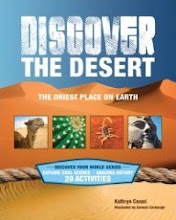One of the best explanations of what micronations are all about is posted on the user-written reference website Wikipedia. The article has entries on individual micronations with links to their websites, and a list of other portals and informational sites, like Micronations.net. (Since this story appeared, it has been added to the Wikipedia entry!) Through the Actual Small Countries website, with links to sites like the CIA World Factbook and Flags of the World, you can find out how to rent the principality of
Most micronations are created in fun, and they’re awfully fun to visit. A good example of a bite-sized sovreignty with its own postal and barter system, a well-thought-out constitution and even its own time zone is the Northern Forest Archipelago. The NFA, founded by Lake Placid middle school teacher Jamie Sheffield (otherwise known as King James II), is “primarily a land and animal and plant based nation-state” with outposts throughout the Adirondacks and New England. But its website offers a great lesson in what kinds of structure a country needs to survive, besides having cute photos of two-year-old Crown Prince Ben at the Royal Family’s
Some micronations were started when their monarchs were only kids. Robert Madison founded the Kingdom of Talossa in 1979 at the age of 14, when he declared his bedroom in Milwaukee to be independant from the
Other land-based micronations break away from their mother country for the publicity. In 1982 the mayor of
A few micronations take the process one step further, going to great lengths to establish their legitimacy. In the 1960s Roy Bates and his family turned an abandoned WWII defense platform in the middle of the English Channel into the Principality of Sealand, conducting a number of bloodless wars ending in court battles or negotiations with invaders and its European neighbors (You’ll want to watch out for micronations that take themselves too seriously, however; they may be the province of separatist groups with grim objectives.)
New micronations (and their websites) are emerging and old ones disappearing all the time, leaving online archeologists to try to make sense of the artifacts left behind. Keep up with the latest developments on the Micronational News Network, featuring headlines from outlets like Antarctica Announcer, the St. Angelsk Times, and the Cyberian Broadcasting Co-op. Yes, there is conflict and strife in the micronational universe, but there is also hope. Events like the Intermicronational Olympic Games, with both real world and online competitions in Frisbee discus, tennis-ball shotput, and virtual checkers, chess and Monopoly, strive to bring unrecognized nations together. Maybe someday silliness will triumph over warfare, and micronations will take the lead to show the rest of the world how to get along.
